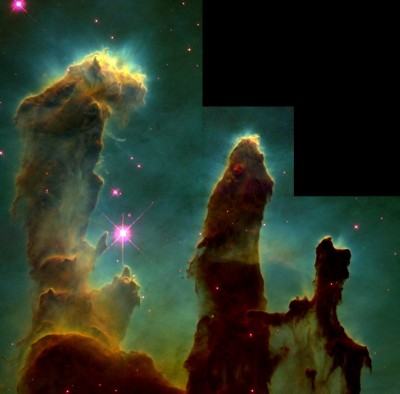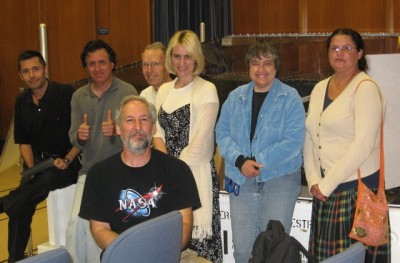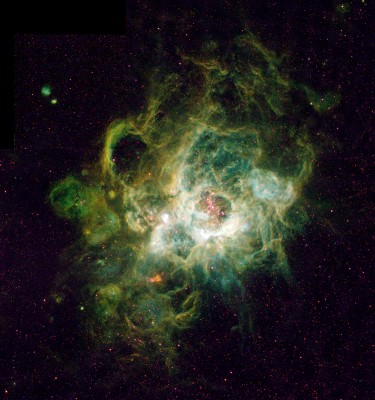Last night, a small group from our local astronomy organization attended a lecture at NASA’s Jet Propulsion Laboratory.
In this picture, we are posing in front of the Wide Field and Planetary Camera 2, which will soon be residing at the Smithsonian Air and Space Museum.
A little bit of history: Soon after its launch in 1990, the orbiting Hubble Space Telescope‘s internal optics proved to be flawed, and the HST seemed doomed. But in 1993, NASA astronauts saved the day by installing the instrument behind us during Space Shuttle mission STS-61. With the addition of this camera, the HST was fully operational. It went on to become one of the most important telescopes in history.
Among the countless, breathtaking images returned by the WFPC2 were the Hubble Deep Field in 1995, the Hourglass Nebula and Egg Nebula in 1996, and the Hubble Deep Field South in 1998.
During Shuttle Mission STS-125, WFPC2 was removed and replaced with the Wide Field Camera 3 as part of the mission’s first spacewalk on May 14, 2009. It was returned to Earth aboard Space Shuttle Atlantis, which landed at Edwards Air Force Base in California on May 24, 2009.
Here are some famous images NASA and ESA made with this camera.

6,500 light years from Earth are the "The "Pillars of Creation" within Eagle Nebula. Columns of gas and dust extend 57 trillion miles (97 trillion km) into space. New stars are forming here! In fact, our own Sun may have come from a structure similar to this. (Click to enlarge).


